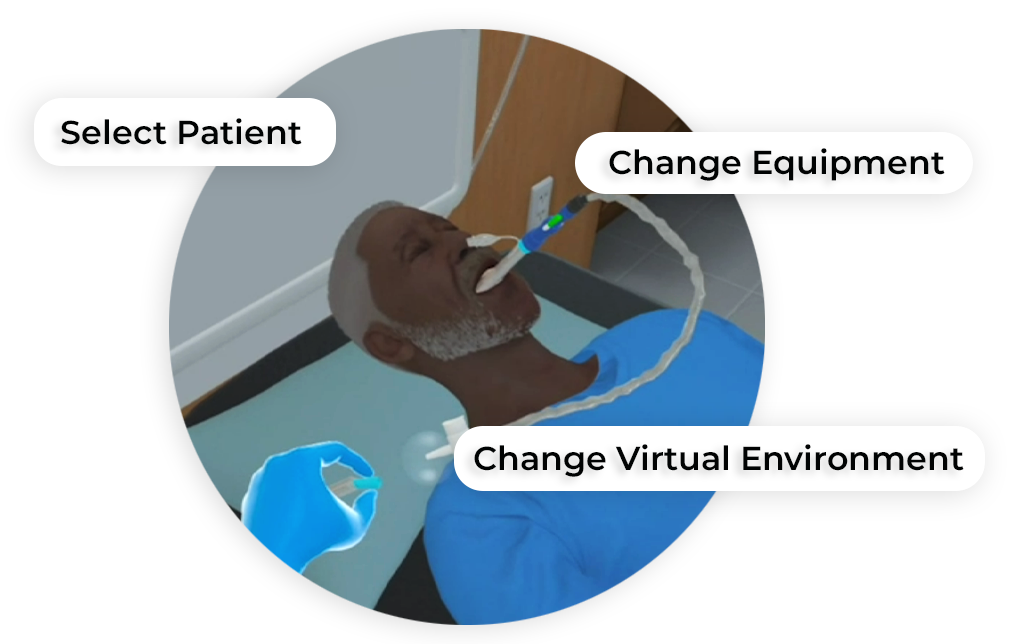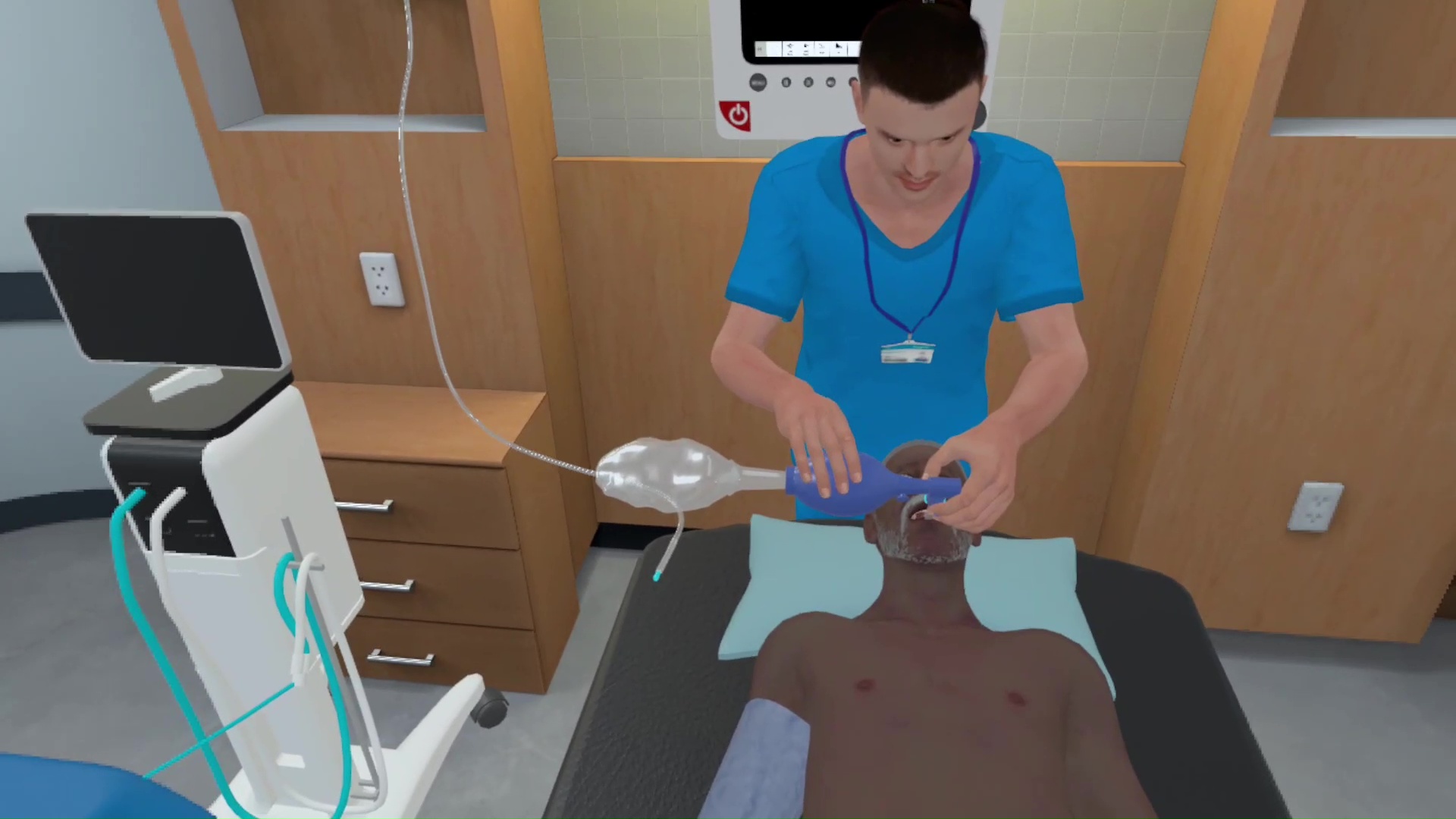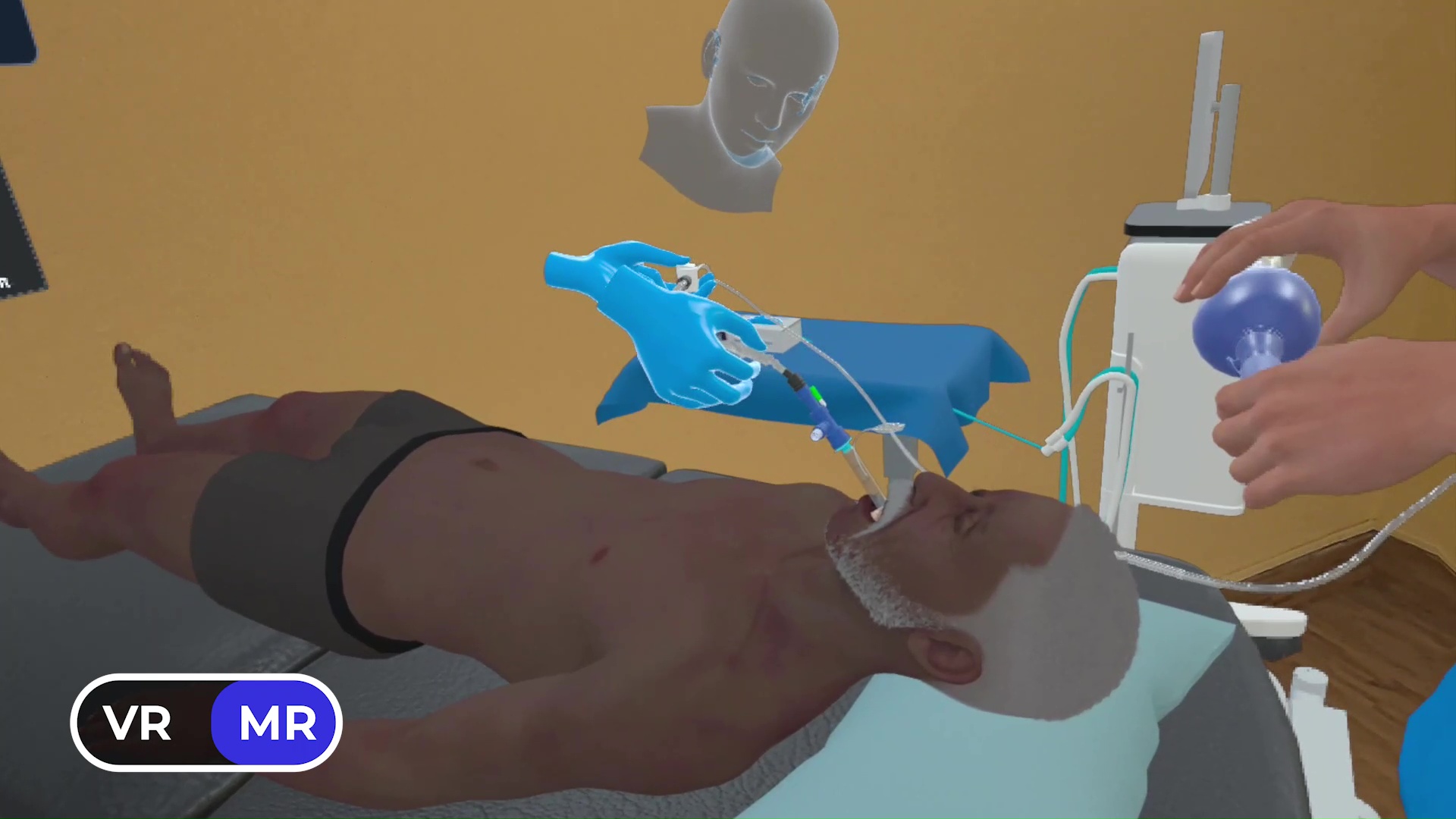Crashing on a Ventilator
This unconscious patient has recently been intubated and is on ventilator. You suddenly notice his blood pressure and oxygen level plummeting. You need to act fast as the patient is crashing on the ventilator.
This multiplayer open scenario VR session is set in realistic interactive environments. It is designed to provide learners practice in managing a case of a patient crashing on a ventilator.
- Follow systematic method of evaluating the deterioration
- Identify and fix the underlying causes
- Effectively perform the DOPES mnemonic

- Monica E. Kleinman et al. Pediatric Advanced Life Support: 2010 American Heart Association Guidelines for Cardiopulmonary Resuscitation and Emergency Cardiovascular Care. AAP. 2010
- Roberts JR, Hedges JR. (2018). Roberts and Hedges’ Clinical Procedures in Emergency Medicine E-Book: Elsevier Health Sciences.
Customize Your Program
Get rid of the editor. Adopt in-VR customization.
MedVR Education is bringing to you in-VR customization that will enable you to put together your own simulations by making selections from a wide range of feature choices.
- Select patient from a diverse background
- Choose preferred virtual environment
- Configure patient vitals
- Define simulation duration
- Create patient history and train with AI-Humans
- Customize session-end debriefing
- …..many more to come

 Multi-playerSessions
Multi-playerSessions Physics-based Interactions
Physics-based Interactions
Core Skills Training

Crashing on a Ventilator
As part of this multiplayer open scenario, the learner will notice the blood pressure and oxygen level of the patient falling. The patient is on ventilator and has been intubated recently. The learner will proceed with the DOPES mnemonic. After disconnecting the ventilator, the learner will manually bag the patient and perform an x-ray. An ultrasound will then have to be performed followed by a suctioning of the ET tube. This scenario is set in a photorealistic environment and all necessary affordances are made available to assist learners in performing their tasks with efficiency and effectiveness.
Debriefing
End-of-task debriefing to assess one’s performance, evaluate actions, and get the most out of the training. Examples of topics being touched upon in the debriefing include the following:
- Thorough patient assessment
- Completion of necessary steps
- Correct medication administration to patient
- Sequential completion of task
- Execution of time-sensitive tasks







